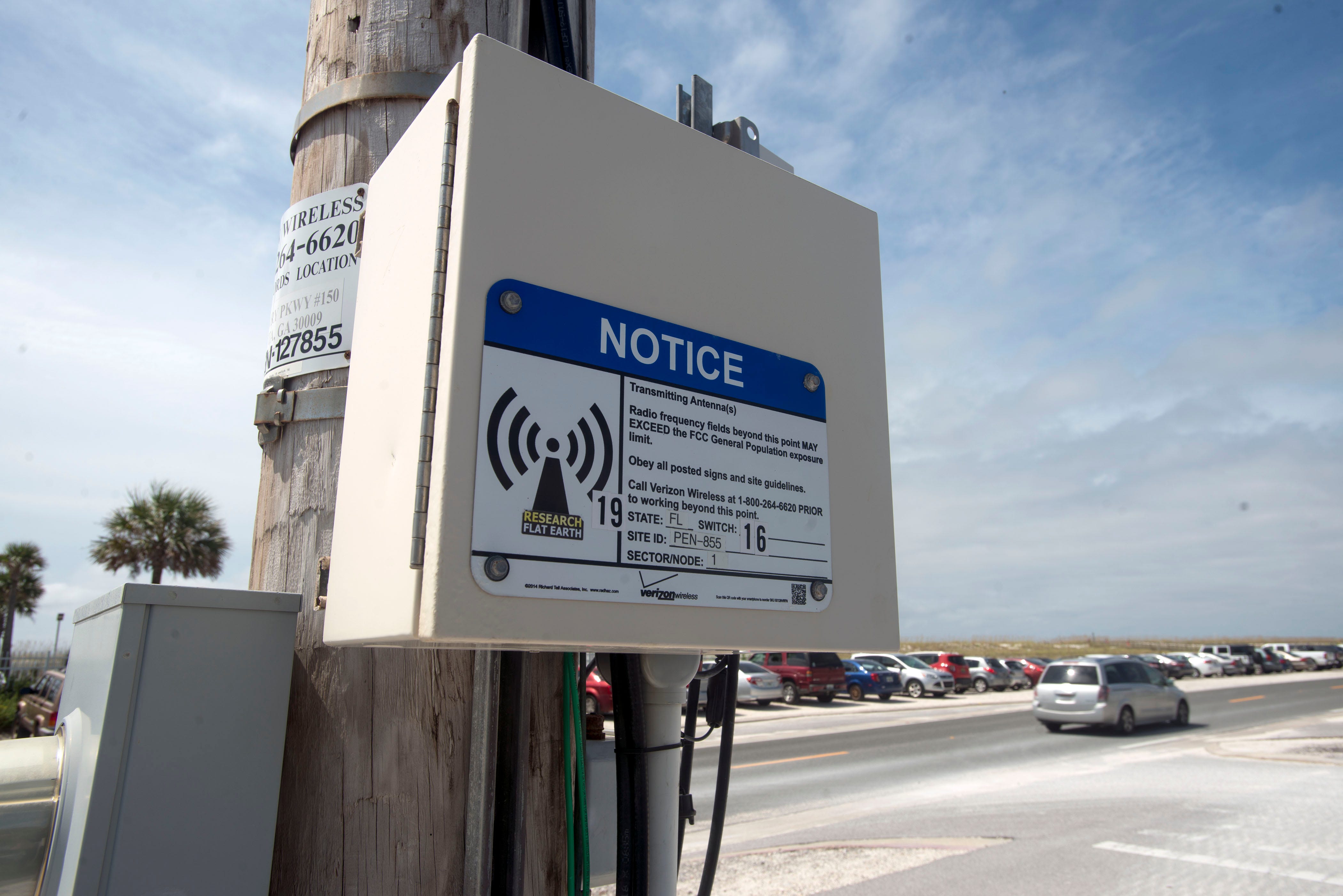What is the safest distance from a 5G cell Tower system?

If you've ever wandered through a town, you may have seen tiny mini 5G cell towers placed on poles for street lighting. They look like small boxes however they're actually sending wireless signals from mobile providers to your phone.
The smaller ones are being replaced by the larger specially-designed cell towers. Although they're not as visible however, they could create problems for those who live nearby.

what is a safe distance from a cell tower of the FCC's Radiation Exposure Thresholds
The FCC's Radiation Exposure Thresholds determine the safe limit at which one can expose to electromagnetic energy generated by wireless devices. The limits for exposure are based on scientific data that prove that electromagnetic energy can be harmful to health.
The rate of absorption called the specific absorption rate (SAR) is an indicator of the amount of radiofrequency energy that is absorption by tissues. It's typically 1.6 watts per kilogram, calculated over one kilogram of tissue.
However, because 5g transmits at higher frequencies this could be able to increase the intensity of energy on the skin and other directly-exposed body parts. This could lead to a wide range of possible harms, like the development of skin diseases such as dermatitis and skin cancer and cataracts.
Due to the potential for severe effects of 5g radiation, PSU has chosen to establish a general, localized power density limit of 4 mW/cm2 averaged across 1 centimeter, and not to exceed 30 minutes, for all 5G services at 3000 GHz. This localized limit is consistent with the peak SAR spatial-average of 1.6 W/kg, averaged over one 5 grams of body tissue, at 6 GHz.
The FCC's Maximum Exposure Thresholds for Maximum Exposure
If you've ever used a cell phone, then you're aware that a safe location from the tower is around 400 meters. This is because the transmitting power of cell towers increases drastically the further away your location from the tower.
Although this may sound like an ideal idea, the reality is that those living close to towers might be more prone to health issues. For example, a study from 2014 in India found that residents living within 50 meters of cell towers had significantly more health complaints than those who lived farther distance from them.
However, this study also revealed that those who relocated into areas farther away from cell towers noticed their symptoms return to normal within a couple of days. Another study has demonstrated that exposure to extreme amounts of electromagnetic field radiofrequency (EMFs) can lead to cancer, brain tumors and other health issues.
This is because RF radiation, used in wireless communications, may penetrate the body's outer layer, the skin. This is important to understand because the skin acts as a protective barrier against injuries caused by mechanical forces, infections from pathogenic microorganisms, as well as the entry of harmful substances. The skin is the most important organ of the human body, and is accountable for maintaining the integrity of other organs.
The FCC's Minimum Exposure Thresholds for the Minimum Exposure
The FCC's Minimum Exposure Thresholds rely on a variety of assumptions that are not supported by scientific evidence. This includes the false assumption that exposures of a short duration to RF radiation are safe due to minimal radiation penetration in the human body (i.e. the heating of tissues).
The assumption is also ignoring the greater penetration of ELF parts of modulated RF signals as well as the effect of short bursts of heat generated by RF waves that are pulsed. These theories are not compatible with current understanding of the biological consequences of RF radiation, and thus they shouldn't be relied upon for health-protection exposure standards.
Additionally there is the fact that both ICNIRP and FCC restrict their exposure limits to local peak SARs that are based on the maximum spatial specific absorption rate (psSAR) which is an inadequate dosimetric tool to determine the degree of radiation exposure. Particularly safe distance from cell tower is not accurate when frequencies exceed 6 GHz. Furthermore, psSAR has not been tested for safe distance to live from cell phone tower exposed to other environmental agents such as sunlight. In the event of interactions, RF radiation with other agents in the environment could produce synergistic or antagonistic impacts. This could result in the risk of having adverse health consequences. For example, co-exposure to RF radiation with sunlight may raise the chance of skin cancer and exacerbate other skin conditions like acne.
